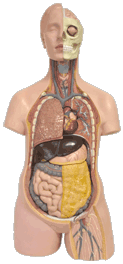At WiseGEEK, we're committed to delivering accurate, trustworthy information. Our expert-authored content is rigorously fact-checked and sourced from credible authorities. Discover how we uphold the highest standards in providing you with reliable knowledge.
What Is the Alar Ligament?
The alar ligament is a paired span of connective tissue attaching the second cervical vertebra, known as the axis or C2, to the skull. It arises from either side of the dens, the tooth-like peg protruding from the central top aspect of the vertebra, and crosses laterally to connect to the occipital bone on the underside of the skull. As the axis is the bone that allows the rotation of the head on the neck, the alar ligament helps limit the range of motion as the head turns from side to side. Also known as the check ligament of the odontoid, with the odontoid process being another name for the dens, this ligament checks or controls rotation and prevents the head from turning too far to either side.
Supporting the head on the spinal column is largely the job of the top two cervical vertebrae, the atlas and the axis. The atlas directly joins with the skull via the occipital bone, the curved bone on the underside of the skull through which the spinal cord exits the cranium. As its name suggests, it is responsible for supporting the weight of the head on the neck. Just below the atlas is the axis, these stacked bones linked by the dens of the axis. The dens projects upward from the anterior or front aspect of the body of the axis, just in front of the spinal cord, and meets the anterior arch of the atlas bone above it, forming a vertical pivot point about which the atlas can rotate.

As the atlas does not rotate relative to the skull, instead allowing up-and-down nodding movements, the axis is the bone that the skull and atlas rotate about to permit the motion of shaking one’s head no. This is made possible by the dens. Something must limit this rotation, however, so the head cannot turn too far in either direction. The alar ligament is the structure that keeps this motion in check.
Like any ligament, the alar ligament is made of strong fibers of collagen and elastin that hold two bones together like a rope. Arising from either side of the dens where it is positioned within the body of the atlas, this ligament extends a short distance outward and slightly upward. It then attaches to the lower rim of the occipital bone to either side of the foramen magnum, the large hole in the bone through which the spinal cord enters the skull. When the head, and, in turn, the atlas are rotated about the dens in one direction, the alar ligament on the opposite side of the dens from the direction the head is turned is stretched to its limit, preventing further rotation of the head.
AS FEATURED ON:
AS FEATURED ON:










Discuss this Article
Post your comments